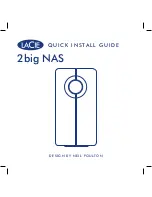
Chapter 5: Installation
Safety
Page 5-3
Primary disconnect device
The main power supply is the primary disconnect device.
External cables
Safety may be compromised if outdoor rated cables are not used for connections that will be
exposed to the outdoor environment. For outdoor copper Cat5e Ethernet interfaces, always use
Cat5e cable that is gel-filled and shielded with copper-plated steel. Alternative types of drop
cable are not supported by Cambium Networks.
Drop cable tester
The PSU output voltage may be hazardous in some conditions, for example in wet weather. Do
NOT connect the drop cable tester to the PSU.
RF exposure near the antenna
Strong radio frequency (RF) fields will be present close to the antenna when the transmitter is
on. Always turn off the power to the ODU before undertaking maintenance activities in front of
the antenna.
Minimum separation distances
Ensure that personnel are not exposed to unsafe levels of RF energy. The units start to radiate
RF energy as soon as they are powered up. Never work in front of the antenna when the ODU
is powered. Install the ODUs so as to provide and maintain the minimum separation distances
from all persons. For minimum separation distances, see
Grounding and lightning protection requirements
Ensure that the installation meets the requirements defined in
Grounding cable installation methods
To provide effective protection against lightning induced surges, observe these requirements:
•
Grounding conductor runs are as short, straight and smooth as possible, with bends and
curves kept to a minimum.
•
Grounding cables must not be installed with drip loops.
•
All bends must have a minimum radius of 200 mm (8 in) and a minimum angle of 90°. A
diagonal run is preferable to a bend, even though it does not follow the contour or run
parallel to the supporting structure.
















































